It may seem “shocking” to hear someone say something negative about Push-Ups. We’ve probably ALL done them, at some point in our lives – whether in PE Class at school, in a fitness class at the gym, in the military, or while being coached in a particular sport. But they’re not a “great” exercise, and they may be even bad, for some people.
First, let’s acknowledge that all exercises are mechanical. We are using our limbs as “levers”, and we are using our muscles as “pulleys” on those levers – while working against some type of resistance. So our body is a type of machine, and all exercises can be evaluated on their own, unique characteristics.
There are absolute laws of physics in play, any time we move or lift something with our arms, legs, torso, etc. This is no different that when we use a crow-bar to lift a car, or the back of a hammer to pull a nail out of a board, or use a wrench to tighten a bolt. All of these are levers, and universal physics principles apply. Further, our body has certain parameters and capacities, and those must also be acknowledged.
A Push-Up is essentially a “Plank”, with arm movement. We begin by holding ourselves up – either from our toes up to our arms (hands), or from our knees up to our arms – and certain muscles cause that to happen. Then, we allow our torso to move toward the ground, and push back up, by bending and extending our elbows and shoulders. This movement involves a different group of muscles, other than the ones that hold us up during our Plank.
So, for the sake of analysis, let’s break it up into two separate exercises – the plank and the “arm” part. We’ll evaluate each part separately, and see what’s good and what’s not-so-good.
The “arm” part is essentially the reverse of a “chest press” or “bench press” – it’s similar to what one would do if he/she were lying supine a bench, holding a barbell. This movement would involve primarily the pectorals, secondarily the frontal deltoids, and thirdly the triceps. But let’s get a closer look, using a woman as an example.
One statistic sites the “average weight of a woman in America” as 145 pounds. So, if this woman were doing a Push-Up, she would be distributing this amount of weight between her hands and her feet. Although her torso may weigh more than her legs (which would place more weight on her hands, than her feet), let’s just divided it evenly. This would mean that 72.5 pounds are being held by her feet, and 72.5 pounds are being held by her hands. So, if we were to flip her around so that she’s on her back, on a bench, she’d be holding a 72.5 pound barbell in her hands.
So the first question we should ask ourselves is, “is this a reasonable amount of weight for a woman to bench press?”. The answer is a matter of individual strength, of course. For some, it might be easy; for others, it would be too much. Generally speaking, the guideline I use (when training clients) is this: if you can do 20 repetitions with it, it’s fine. If you can’t even get 10 repetitions with it, it’s too heavy. “Too heavy” is bad for a number reasons.
1. The likelihood of injury increases dramatically (injury to the shoulder joint, elbows, and wrists – as well as the pectoral muscle, anterior deltoids, and all the tendons involved). Keep in mind, that for the “average woman”, it’s over 36 pounds on each wrist (one quarter of your entire bodyweight).
2. It’s very uncomfortable (overwhelming) – which means it’s psychologically discouraging, and tends to make the user hate exercise (understandably so).
3. It disallows the user from being able to do enough repetitions to get an endurance benefit.
4. It disallows the user from being able to do enough repetitions to cause much visible muscle change.
5. It disallows the user from being able to do enough repetitions to cause a significant increase in circulation.
6. It disallows the user from being able to do enough repetitions to cause a significantly long set, which means a compromise in calorie spending.
Because a Push-Up is a bodyweight exercise, you “use what you have” (whatever your bodyweight is). There’s an irony here. The heavier one is, the harder the exercise is for them. Yet, the heavier one is, the more likely they are to be “out of shape”. So those who are the most out-of-shape, are forced to use a “resistance level” that is greater than those who are in better shape.
Using bodyweight (for any exercise) is an “all or nothing” proposition. It would be like walking up to a barbell rack (holder), and picking up the one-and-only weight on the rack for your bench press. When I train clients, I select the weight that I know will allow them to get 20 repetitions, yet still challenges them (with a “reasonable” amount of effort). I don’t pick the same weight for every person, and I don’t pick a weight that only allows them to do 8 repetitions, with sloppy form, incomplete range of motion, and a huge amount of strain. That would be imprudent. Yet, that’s precisely what happens, most of the time, with Push-Ups.
Yes, you could do the “easier” version of the Push-Up (on your knees), but for many that is still too much resistance. If it’s not, than it’s a little better, of course. But what if doing it on your feet is too difficult, and doing it on your knees is too easy? That would be as silly as going to a gym that only has two weights – “too heavy” and “too light”.
Next question: Is the Bench Press (movement) good? It’s not “bad”, per se ….. assuming one is using an appropriate weight (resistance level). But it’s not as good as a Supine Dumbbell Press (the same exercise, but using dumbbells instead of a barbell). I realize some would beg-to-differ (disagree). But from the perspective of developing the pectoral muscles, it’s pretty obvious. The barbell press (using the straight bar) prevents one from being to use a full range of motion (i.e., it causes the arms to stop, with about 30% of the range of motion still remaining). Push-Ups have the same limitation.
(Note: If “partial range of motion”, like that of the Bench Press and Push-Ups, is acceptable, than we would do ALL of our exercises that way. The reason we use “full range of motion” on exercises like “biceps curls” and “squats” and “rowing” is because it’s better than partial range of motion.)
Using dumbbells (instead of a straight bar, and instead of a Push-Up) allows the arms to go wider at the bottom (more space between the hands), and come all the way together at the top (zero space between the hands), allowing for a complete range of motion for the pectoral muscles. Using dumbbells is also less strain on the shoulders and on the elbows. The triceps don’t get as much work when using dumbbells, as compared with a barbell (or when doing Push-Ups), but there are far better triceps exercises – so you’re better off doing them separately anyway.
So, as you can see, the “arm” part of the Push-Up is not entirely bad, but certainly not nearly as good as the equivalent movement, performed with the comfortable resistance (given your individual strength level of the moment), with dumbbells on a bench.
Now let’s look at the Plank part of the exercise.
When we hold ourselves up – bridging between our toes and our arms – there are a number of muscles that are “working” to maintain this position. These include our quadriceps (frontal thighs), our hip flexors, and our abdominals – primarily. These are the muscles that keep our midsection (the area between the two pillars) from collapsing. These muscles are “loaded”, which means that they are holding the weight of our body.
However, there is no movement in these muscles. The knees stay locked; the spine stays straight; the hips stay still. The muscles that would otherwise allow movement in the knees, the spine, and the hips, are not “stretching and contracting”, like they would be if we were doing Leg Extensions (for our quads) or Ab Crunches. In other words, the muscles that “hold” our body in a bridge (plank) position, are working “isometrically” – they are holding resistance, but are not actively causing joint movement.
When muscles cause movement – (e.g., Leg Extensions and Ab Crunches) – they are working “dynamically”. They are expanding and contracting. So our next question here is, “which type of muscle work is better – isometric or dynamic?”. The consensus is that dynamic muscle work is more productive than isometric muscle work, from a number of perspectives – flexibility, circulation, and visible muscle development.
(Note: When the Plank / Push-Up is performed on the knees, it eliminates even the isometric involvement of the quadriceps. This is because the lower leg is the operating lever for the quads, and without your feet “pushing” against the ground, there is no lower leg involvement.)
Summary
Push-Ups are convenient, but the benefits they offer are compromised, and the exercise could (in some cases) pose a risk of injury to the shoulders. The wrist position also requires excessive “back-bending” of the hands, which is uncomfortable at best, and injurious at worst. Push-Ups are also psychologically discouraging because, in general, the resistance of “bodyweight” is excessive for most people.
Unfortunately, there is a “standard” or an “expectation” that has been placed on people, when it comes to Push-Ups. We are expected to be able to do them – as if those who “cannot do them” or “don’t like doing them” are sissies or wimps, or they’re lazy, or are unenthusiastic or uncommitted. This is entirely inaccurate.
I’ve been exercising my entire life, since I was 14 years old. I’ve won State, National and International bodybuilding competitions. It’s safe to say that I don’t shy away from “hard work”, and am not afraid to sweat. But I don’t do (and won’t do) Push-Ups because they are so compromised, and I have so many better options.
I do Supine (or Decline) Dumbbell Presses because they are the safest, most productive choice for my pectorals. I do Squats and Leg Extensions for my quads, because they are far more productive than doing Planks (or any other type of isometric exercise). I do Ab Crunches because they are more productive for abdominal development, and also more conducive to spinal mobility, than are Planks. I don’t want to risk wrist injury or shoulder injury (nor any discomfort). I want to use the exact amount of resistance that feels “right” (not overwhelming – and certainly not the “random” choice of whatever it is I happen to weigh that day) and I want to do enough repetitions to gain the benefits listed above.
We have been lulled into thinking that what’s convenient, is also safe and effective. This is simply not true. Push-Ups are convenient, in the absence of better options (basic equipment like a bench and dumbbells). But they’re not necessarily “safe and effective”, as compared with other exercises. They’re “okay” when someone absolutely does not want to invest more than a few minutes exercising – and is also willing to accept the compromises and potential consequences that that brings.
Yes, Push-Ups work “many muscles at one time”, but not very well. If saving time is your primary or exclusive goal, go ahead and do them. But if getting the best results, avoiding injury, and enjoying the process are goals that you think are worthwhile – you’re better off doing the alternative exercises I’ve listed above, instead of Push-Ups.
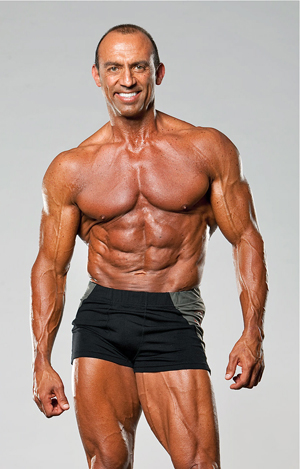
Doug Brignole is a former Mr. America and Mr. Universe winner. His competitive career has spanned 38 years, so far.
He is the co-author of “Million Dollar Muscle” (a sociological perspective of the fitness industry, used as curriculum in universities), and is also the author of the upcoming “The Physics of Fitness” (a bio-mechanical analysis of resistance exercise, also for academia). Photo by Robert Reiff – 2011.







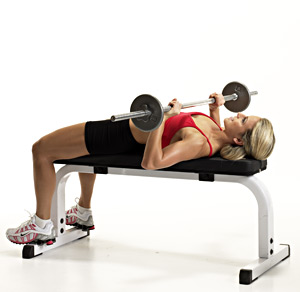
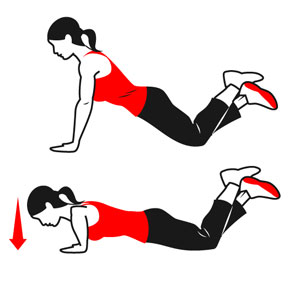
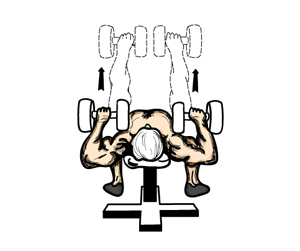
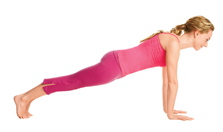














You must be logged in to post a comment Login